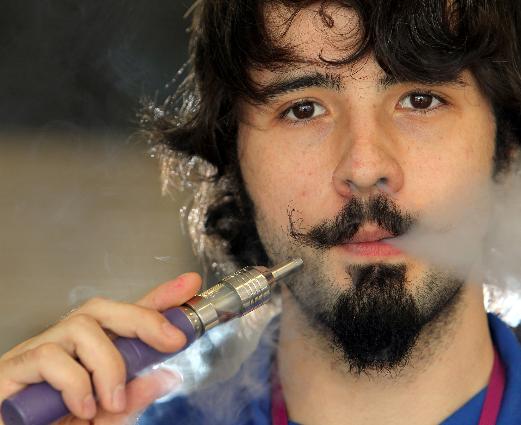Nicotine Poisoning Blamed on E-cigs
BY KB HALLMARK
Threats of nicotine poisoning are now serving as the catalyst of new protests against electronic cigarettes, prompting some countries to consider regulating or banning the e-cigs. The European Union is currently considering either bans or regulation, and some places such as Spain have already banned the e-cigs.
Some cities in the US are also considering bans or stronger regulations on the products. New York, Chicago, and Oklahoma City are also seeking regulation with some cities choosing to treat the e-cigs as tobacco products, even though they do not contain any tobacco. New York just recently passed a ban on e-cig product usage in public places.
E-cigs are electronic cigarettes that feature a heating element. They contain propylene glycol which produces a vapor when heated and also have a flavoring liquid. The liquids come in a variety of flavors and contain different levels of nicotine.
The e-cigs are used by people who are trying to quit smoking tobacco, and many people see them as a safer alternative to regular cigarettes which contain several carcinogenic compounds.
The liquids used for e-cigs contain concentrated amounts of nicotine and are being blamed for poisoning children who accidently drink the fluid. In May 2013, an Israeli 2 year old reportedly died after drinking the fluid and ingesting a lethal dose of nicotine.
In Sweden, 29 cases of nicotine poisoning were attributed to e-cigs last year. Due to less strict requirements, e-cig users are able to use in more places, which may be leading to accidental overdoses as users are not required to wait for a smoking break.
Nicotine poisoning can exhibit many side effects such as nausea and vomiting, abdominal cramps, agitation and weakness. Severe cases can lead to coma and respiratory failure.
Nicotine has an average lethal dosage of 0.5 to 1 milligram per kilogram in body weight for humans. It is easily absorbed through the skin. It has a half life of approximately two hours.
Most overdoses happen with simultaneous use of nicotine products, such as smoking and use of a patch at the same time.
Emergency treatment of nicotine poisoning includes administering activated charcoal and gastric lavage.
Nicotine has been used and valued for centuries due to its positive effects. It can relieve depression, suppress appetites and can help with mental focus. Nicotine is widely believed to be highly addictive, although some theories suggest that pure nicotine is not addictive, but it is only addictive when used in tobacco form.
No matter what the true reason, tobacco usage is highly addictive and has been attributed to several health problems, such as strokes and lung cancer. The e-cigs are seen as a safer alternative by many users and some health officials have even come out in favor of e-cigs over regular tobacco.
Other officials claim that e-cigs are unregulated and have not been fully researched for potential side effects. Authorities claim that the health hazards from inhaling the propylene glycol mist are unknown.
Some cities that are considering bans on e-cigs are concerned that they may be used by teenagers as a gateway into cigarette smoking. According to a youth survey by the US Center for Disease Control, 10 percent of high school students have tried using e-cigs. CDC official called the results troubling. Opponents blamed the increase in teenage usage on advertising featuring popular celebrities such as Jenny McCarthy and Courtney Love touting the benefits of the e-cigs.
Proponents of the e-cigs point out that the products are safer than the traditional cigarettes and say that many people have been able to stop using traditional tobacco thanks to the use of e-cigs. Many satisfied customers point that the e-cigs have been their only alternative as nicotine patches are costly, and smoking cessation pills such as Chantix can have severe side effects such as suicidal thoughts.
http://www.newschanneldaily.com/nicotine-poisoning-blamed-e-cigs/2316/kb-hallmark/

